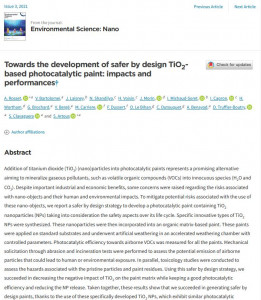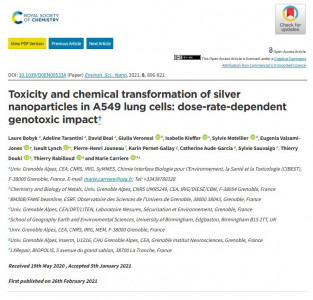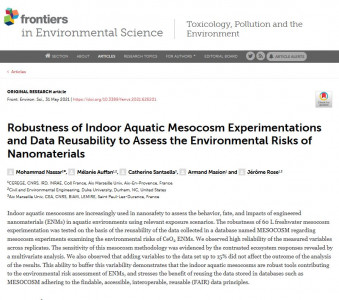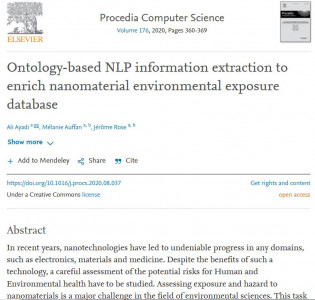Mohammed Hamidat (LEMIRE/CEREGE) will defend his PhD thesis entitled " Relationship between nanomaterials design and their environmental impact" the 8th December 2015 at 14:00 pm at the CEA Cadarache.
"Relationship between nanomaterials design and their environmental impact."
La soutenance de thèse aura lieu le mardi 8 décembre à 14h00 dans l'amphithéâtre du bâtiment 120 au CEA de Cadarache.
Vous êtes cordialement invités à assister à la soutenance, ainsi qu'au pot qui suivra dans la salle de conférence du bâtiment 177.
Pour assister à la soutenance, merci de bien vouloir renvoyer à Catherine Santaella avant le 07/12 le document de demande d'accès afin d'établir votre accès au centre.
Il faudra vous munir d'une pièce d'identité en cours de validité pour le jour de votre accès.
Abstract :
Soils are one of the most important sinks for nanomaterials (NMs), which are likely to interact with plants grown in these soils and enter the food chain. NMs toxicity is related to their physico-chemical properties hence to their design that can be sophistically handled and conceited in order to improve their characteristics. The “safer by design” concept, aims at minimizing the impact of NMs since the conception step of a product by tuning its properties. Therefore, double walled carbon nanotubes (DWCNTs), TiO2, and CeO2 NMs with different properties (e.g. polymorphism, shape, average particle size, coating surface charge and reactivity,) were used, to assess the relationships between NMs design and their environmental impact on a soil-plant-microbe system. Canola was used as a plant crop model and grown in a calcareous clay-loam soil enhanced with the NMs at a low concentration (1mg.kg-1), regarding the current literature. Our results revealed that the diverse NMs differentially altered the structure of bacterial community and the microbial enzymatic activities. The amplitude of the impact depended on the physical-chemical design of NMs and on the compartment : unplanted soil, the rhizosphere, or the root. Significant impact of NMs on soil microbes were found to be in the order CeO2 > DWCNTs > and TiO2. An increasing nanodesign-dependent gradient was shown in the impact of CeO2 NMs, going from unplanted soil to the root compartment. A significant deleterious impact of CeO2 NMs in roots was the selection and enhancement of bacterial genera related to heavy metal and antibiotic resistance and the decrease of taxa associated with soil suppressiveness toward plant pathogens. Shaping the design did suppress these consequences and limited the effects. DWCNTs and TiO2 impact were moderated, mostly localized to bulk soil and sometimes favoured beneficial taxa (TiO2). These results show that the plant could potentiate and or mitigate NMs impact. Although differential impacts on the plant antioxidative system and element uptake, none of NMs tested altered plant growth showing that the plant counterbalanced and overcame NMs effects at a low NMs concentration. Our study shows that the design of NMs is a tool efficient to minimize and/or control the impact on a simplified terrestrial ecosystem. From single cells, our results evidenced the need to characterize the exposure and showed that TiO2 NMs polymorphism, shape, exposed crystalline faces, acid sites on faces, and [TiO2]/[cell] ratio controlled the mechanism of interactions between cells and NMs and determined the cell response.










